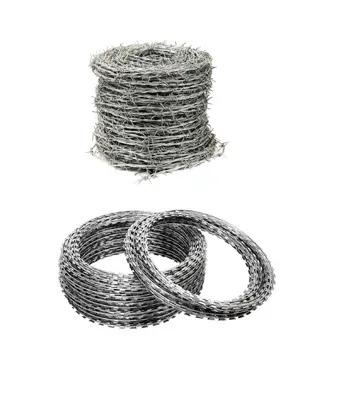Electric Fence Netting Solutions for Enhanced Security and Livestock Protection
The Versatility and Applications of Electric Wire Netting
Electric wire netting, often referred to as electrified fencing, is a robust and versatile solution for a variety of agricultural, industrial, and residential applications. This type of fencing has gained popularity due to its effectiveness in protecting properties from intruders and animals, as well as its ability to serve multiple functions beyond mere containment.
Understanding Electric Wire Netting
Electric wire netting is essentially a fence that incorporates electrified wires, which deliver a mild electric shock when touched. This shocking mechanism serves as a psychological barrier, deterring animals and humans from attempting to cross the boundary. The netting can be made of various materials, including steel or aluminum wires, and is often designed with multiple strands to increase its effectiveness.
One of the main advantages of electric wire netting is that it can be installed to cover irregularly shaped areas that traditional fencing might not accommodate easily. The adaptability of the netting allows for quick deployment and modifications as needed, making it ideal for various terrains and environmental conditions.
Agricultural Applications
In the agricultural sector, electric wire netting serves primarily as livestock containment. Farmers often use it to keep their animals safe within designated areas while preventing wild animals from encroaching on their farms. This is particularly crucial for crops that are vulnerable to grazing, as an electrified fence deters deer, rabbits, and other wildlife that may cause significant damage.
Moreover, electric wire netting can be used to segment pastures for rotational grazing, promoting land sustainability and preventing overgrazing. By managing livestock movements effectively, farmers can maintain healthier soils and better pasture quality.
electric wire netting

Industrial and Security Uses
In industrial settings, electric wire netting is employed to secure property and assets. Factories, warehouses, and construction sites often use electrified fencing as a physical barrier to deter unauthorized access and theft. The presence of an electric fence not only acts as a deterrent but can also trigger alarms if breached, thereby enhancing security measures.
Furthermore, electric wire netting is utilized in wildlife management and conservation efforts. National parks and wildlife reserves often implement this type of fencing to protect endangered species from poachers or to manage human-wildlife interactions by keeping wildlife away from populated areas.
Residential Benefits
Homeowners are increasingly turning to electric wire netting as a modern solution for fencing around their properties. It can provide both security and privacy, allowing homeowners to enjoy their outdoor spaces without the fear of intruders or unwanted visitors. Moreover, the aesthetic appeal of electric wire netting, which can be designed in various styles, allows it to blend seamlessly with existing landscape designs.
Homeowners can also use electric fencing for garden protection. By preventing animals like rabbits and deer from entering gardens and flower beds, electric wire netting helps maintain the beauty and productivity of residential landscapes.
Conclusion
In conclusion, electric wire netting presents a flexible and effective fencing solution with a wide range of applications. Its ability to keep livestock contained, protect crops, enhance security in industrial settings, and benefit residential properties speaks to its versatility. As awareness of animal welfare and environmental sustainability continues to rise, the demand for electric wire netting is likely to grow, making it a staple in modern fencing solutions. Whether used on a farm, in an industrial complex, or around a home, electric wire netting proves to be an invaluable asset in various fields, ensuring safety, security, and peace of mind.
-
Space-Saving Chain Fence Hacks Vertical Gardening with Cyclone MeshNewsJul.16,2025
-
Innovations in Iron Nail Wire Production for Modern ConstructionNewsJul.16,2025
-
Creative Uses of Wire Netting Fence in Modern Landscape DesignNewsJul.16,2025
-
Barbed Wire Fence Innovations in Anti-Climb TechnologyNewsJul.16,2025
-
Architectural Uses of Umbrella Nails for Aesthetic Roof DesignsNewsJul.16,2025
-
Architectural Uses of Razor Barbed Wire in Secure Urban DesignNewsJul.16,2025




